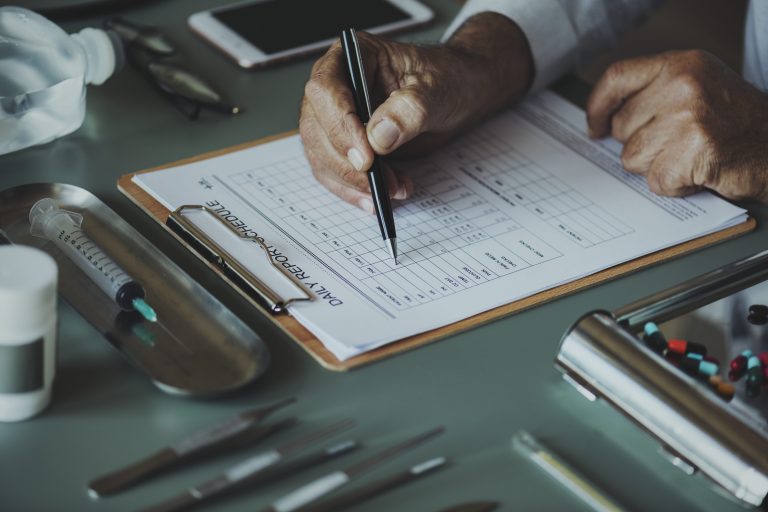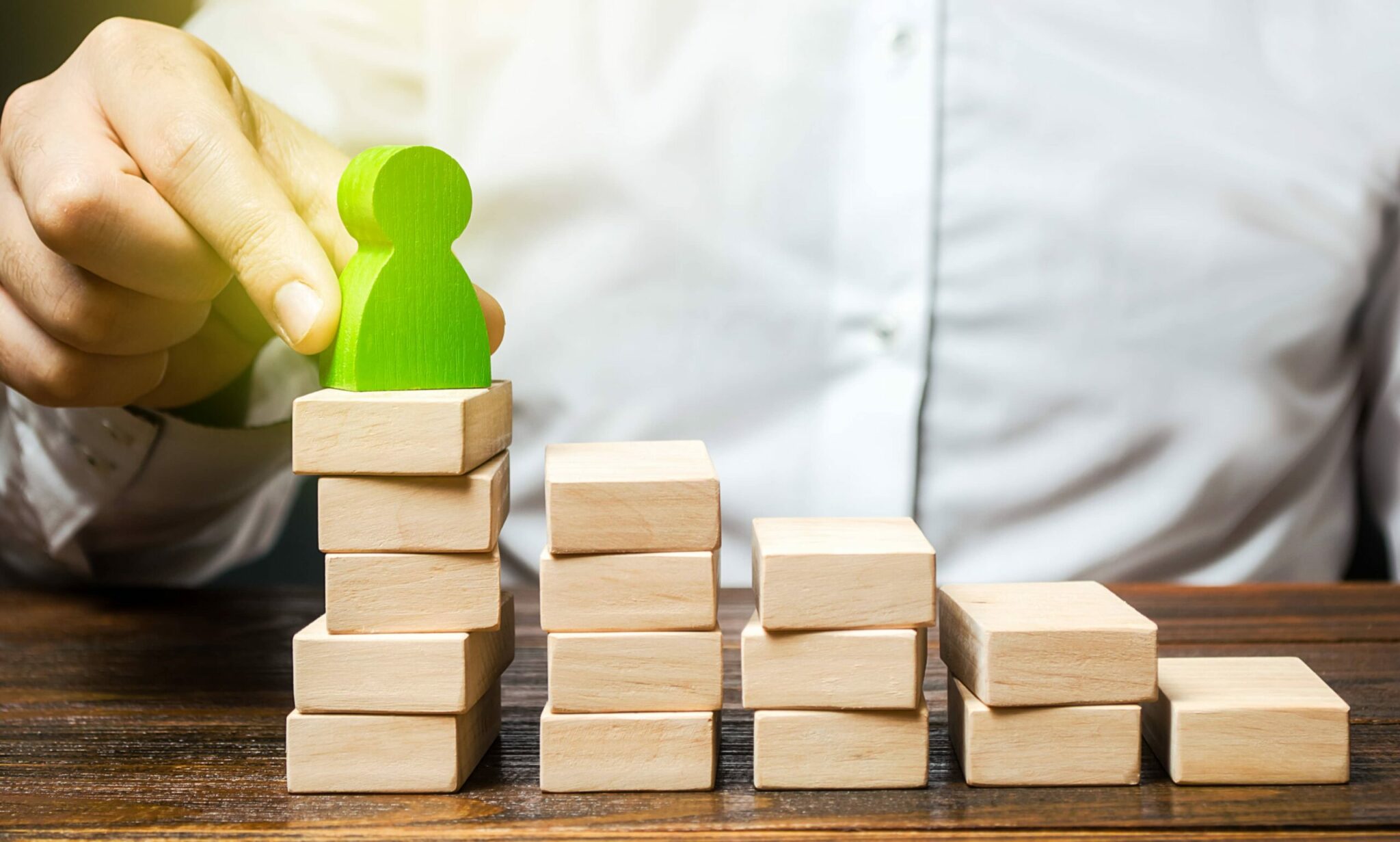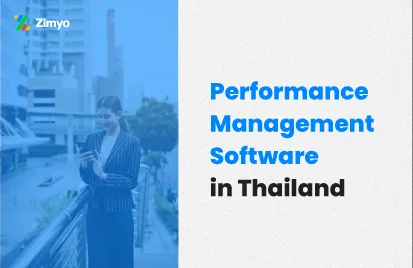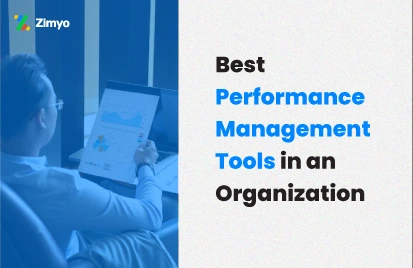The credit for the flourishing of a business always goes to the dedication and hard work of employees that lead a company to the path of success. The future of a business is directly related to how well the employees of the company perform.
To regulate the performance of the employees, it’s essential to have a sophisticated manner of evaluating employee performance from beginning to end.
This process of keeping a systematic record regarding the performance of each employee is known as performance appraisal.
In the following article, we will discuss the term’ performance appraisal’ in a detailed manner.
Introduction to Performance Appraisal
Performance appraisal systematically evaluates or measures an employee’s work performance in terms of the established job requirements. This helps to analyze the strengths and weaknesses of the employee, conveying their future potential and worth to the organization.
The process of performance appraisal is also known as performance evaluation, performance reviews, or employee appraisals.
Performance appraisal is a crucial step to enhance the working of an organization as it helps the manager better understand whom to delegate a task to, whom to promote and whom to issue a warning.
Performance appraisal helps the manager to differentiate between the employees’ working manner and recognize the efforts of each of them individually. Not only the manager, but this method also induces a sense of being seen in the employees, hence promoting them to work more effectively and effectively.
Keeping a track of the employees in an organization is the first step towards successful human resource development. HR managers should be aware of the capabilities of their employees. But, how does one achieve this? The answer is simple, by simply evaluating the employees based on how they perform in the organization.
The traditional methods of performance appraisal, without any doubt, were cumbersome. We have nobody, but IT to thank for developing software tools that have enabled us to reform our performance management systems. While employees might still seek some manual attention, a chunk of the work is conveniently done by offering performance appraisals to the employees.
Objectives of Performance Appraisal

The purpose of employee appraisal is not only to improve the performance of the employees; the objectives of this procedure go way beyond that.
From helping in setting employee goals to helping in deciding whom to promote and cut loose, this procedure helps the manager a lot to manage the employees more efficiently.
The main objective of the performance appraisal tool is to evaluate the performance of the employees so that appropriate training and development strategies can be structured to boost productivity in the organization.
The objectives of performance appraisal are numerous and each is as crucial as employee performance management.
Some objectives of performance appraisal are:
1. Help employees set goals
One of the most critical objectives of performance appraisal is to help set employee goals. This process gives employees a vision of what the managers expect from them and what areas they need to improve.
The set goals must be achievable and specific to ensure the employees understand what they need to do and what standards they need to reach.
2. Acts as a motivation
Performance appraisal helps effectively communicate what performance is expected from the employees, providing transparency between the manager and the employee. As the manager can measure and compare each employee’s performance in detail, it becomes crucial for the employees to work more effectively, meeting the expected standards to gain the upper hand in future promotions and opportunities.
To keep these upcoming opportunities, the employees work accordingly, fulfilling the following performance appraisal objective.
3. Easy analysis for promotion/increment
As the performance of every employee is present in detail in front of the management, it becomes a lot less crucial for them to identify the deserving employee for a raise or promotion.
The process helps differentiate between the employees who do or do not have the potential to get promoted to an upper position in the company.
4. Identifying underperforming employees
As every employee’s performance is detailed in the procedure, it becomes easier for the manager to differentiate between high-performing and underperforming employees. It’s essential to have a record of the employees not working up to the expected standards to issue them a warning to start working more effectively.
It’s never good for the company to have employees who do not work to their full potential, affecting the company’s efficiency.
5. Identifies need for training
Performance appraisal helps determine which employee requires training per their performance record. An employee with the expected potential but improper training can lead to the loss of a true asset for the company.
This process helps analyze the following employees and provide them with the needed training hence not letting any potential go to waste.
6. Identifies the need for hiring
Performance appraisal helps in analyzing the working of the departments in detail, hence identifying the areas where more employees are needed and whether more candidates should be hired or one must be shifted from one department to another.
7. Increases organizational performance
As the process helps in all the points mentioned above, it simultaneously leads to better and more efficient working in the organization, increasing its productivity and overall performance.
From motivating the employees to work better to help promote the deserved ones, the process helps build an environment perfect for achieving the company’s desired goals.
Improve Performance and Profitability!
Methods of performance appraisal
As a crucial part of any organization, it’s vital to adopt a method that fits best for the company and its policies. Adapting a technique that works best for the company can turn out to be a milestone for the future success of the organization.
Different types of performance appraisal systems are available to us today. These are designed such that different Performance Management Software focus on the needs of different post-holders in an organization. This endows accessibility to those concerned with an employee’s performance.
Some of the methods that are known to be beneficial for accurately measuring performance appraisal are:
1. Ranking Method

Being one of the oldest performance appraisal methods, it compares the employees to most to least productive in a parameter. Even though the method has been around for quite a while, it’s not considered the most effective.
On the brighter side, it’s simple and quick to achieve with minimal cost and time investment and provides a numerical rating of the employees to the management to easily comprehend the most to least effective employees. However, if we take a closer look at it, it’s not much of a use if the number of employees in an organization is high, as it might lead to inaccuracies. It also does not take into account the skill and mindset of an employee, ignoring the behavioral and talent factors of the employees.
2. Behaviorally Anchored Rating Scales (BARS)

Unlike the ranking method, a behaviourally anchored rating system considers the employees’ behavioral aspects, relating it to their performance.
It is considered one of the unique qualities of this method as it compares the intangible characteristics of several employees with specific behavior examples that anchor each performance level.
These behaviors are defined using the critical incident technique or other job analysis methods.
This method is used by most organizations as it uses the mindset of the employee, which is directly connected to a better and modern performance that helps the company for achieving the desired organizational goals. An employee with a good skill set always proves to be an asset to the company be it present or future.
3. Grading Method

This method of performance appraisal has specific grades along with characteristics that need to be fulfilled in order to obtain the respected grade. As each and every grade is defined in detail, it becomes easy for the supervisor to grade the employees accordingly but in some cases, the supervisor might turn out to be biased, rating the less deserving employees more than the ones who actually deserve the specific grade.
4. Management By Objective (MBO)

In this method of performance appraisal, at first a goal is set with contact between the supervisor and the employee, with clear instructions of specific responsibilities and expected results.
At the end of every period, progress is tracked, which helps in analyzing training needs, course corrections and performance gaps.
This method of performance appraisal is required in the job type where each employee is assigned with a different duty/ task. The progress of each employee can be measured individually, relating to the events of their specified task.
This method helps the employees to get a clear vision of what is expected from them and as for the supervisor, it gets easier to form a connection with the subordinates with regular communication among the periodic reviews, making it easier to let them know about the expected standards promoting organizational alignment.
5. 360 Degree Appraisal

This method of performance appraisal includes inputs from everyone, from seniors to juniors. This is used to analyze an employee’s aptitude and behavior.
This method best helps in identifying development and training needs in employees.
This method is expected to be highly accurate and reliable as compared to other methods as every entity of an organization is taken into consideration before reaching at any conclusion.
But on the other hand, the method can turn out to be ineffective as being a subjective manner, people might be biased in providing the feedback based on personal aspects, affecting the whole point of performance appraisal.
This system enables the managers as well as the employee’s colleagues to review an employee’s performance. It also offers employees an opportunity for self-assessment. Self-assessment allows individuals to assess and evaluate their own behavior and job performance. All in all, it serves as a feedback system so that the strengths and weaknesses of an employee can come to light.
Build stronger teams with 360 degree appraisal!
6. Checklist Method

This method of performance appraisal, questions that can only be answered in the form of yes/ no are asked relative to the employees work and behavior.
Each question carries a weightage according to the priority of the aspect being inspected.
Once the assessment has been completed, the results are analyzed by HR, who calculates an overall performance score for each employee.
To ensure accuracy, similar questions molded differently are asked more than once.
This method of appraisal is useful in an organization where not many employees are present, and just a few job roles are allocated. This method reduces the chances of biases in analyzing the performance of an employee, but it’s not effective for an organization having a large number of job roles, as creating various questionnaires for all the job roles might create chaos.
7. Forced Distribution/Bell Curve
This method is the most widely used method of performance appraisal.
Taking into consideration some of the predetermined parameters, supervisors are expected to rank the employees into three or more categories, that are poor, good, or excellent. Bell curve is typically a ranking system that analyzes several parameters before classifying the employees into several categories.
Bell curve method helps in preparing a visible difference between all the employees, making it easier to identify the potential asset employees of the company.
Mainly a graph representation that is bell-shaped is created by putting the extremes as outstanding and poor performers. Almost more than half of the workforce falls in the middle of the distribution.
Even though forced distribution or bell curve method is considered to be cost-effective and easy to implement, often the accuracy of this method is questioned by the employees leading to misunderstandings that might lead to a loss in the morale of the workforce.
8. 720 Degree Appraisal

The 720 degree appraisal method is a multi-rater performance evaluation method that carries the 360-degree method twice. In the first round, the responses collected are used to identify the personal development aspects of an employee and training requirements, whilst in the second round of this 360 degree feedback is done, they help in evaluating the further areas of improvement.
The accuracy of this method is also considered to be high as compared to other methods, based on the number of people taken into consideration, from co-workers to seniors.
Sometimes the accuracy is questioned as employees might get biased based on the personal relationships of the employees, leading them to deliberately rank a specific employee less than deserved.
Process of Performance Appraisal
As a crucial step of any organization, it’s important to have a designated process for the implementation of performance appraisal. To ensure a chaos-free performance appraisal process, the company is required to undergo a procedure as follows:
1. Establish performance standards
The very first step of performance appraisal is the establishment of performance standards. Performance standards are set by the organization to clear a path for the employees to achieve, i.e., to eliminate confusion and chaos.
If a set of goals are informed to the employees in advance, it ensures the meeting of performance standards simultaneously, leading to the achievement of departmental goals and objectives. In order to be clear, the standards of set goals should be achievable and relevant.
After the standards are set by the seniors, it’s important to disclose them to the subordinates clearly to minimize any sort of misunderstanding or confusion.
2. Communicate performance standards
After completion of the first step, the second step ensures proper communication between the seniors and subordinates to tell them about the goals. In order to be effective, performance standards must be clearly conducted for the employees, and they must be clear about what they are expected to achieve.
3. Measure performance
The third step is one of the most crucial ones, that is, measuring the performance of the employees using the decided technique by the organization.
During this step, the managers should take into consideration the behavioral aspects too instead of just the quantitative aspects to ensure more credibility and accuracy. Intangible skills are more difficult to measure as compared to quantitative ones but pay a high value to the company if used appropriately.
The focus of measuring the performance should be based on what matters to the company rather than measuring what’s easy to measure.
4. Comparison
In this step, the measured performance in the third step is put in comparison with the set performance standards in the first step.
They are put in comparison to ensure if the desired standards are achieved or not by the employees, and if not, then by what margin.
5. Discussion of appraisal
This step is a face-to-face reveal of the performance appraisal report of the employees to them. It becomes difficult at this step as many emotions might get involved if the expected reports are not presented.
This step includes a different approach of several people as some might agree and some might disagree with the results, and varying opinions might be there to hear from various people.
In this step only, the employees who are seen to be working exceptionally well from a period of time are praised, and at the same time, the employees who are not able to meet the desired expectations are issued a warning.
This step also helps in motivating the employees for future performance.
6. Implement personnel action
The final step of the appraisal process includes the implementation of the steps to give a reward like a raise, promotion, or any other opportunity to acknowledge the employee who met the set performance standards. This not only makes the rewarded employee feel appreciated but also acts as a motivation for the rest of the employees to work well enough in order to achieve the same reward.
After the completion of all the steps, the managers should analyze why the desired performance goals are not being achieved and should soon create a plan of action to eliminate such practices either by providing more training to the employees or hiring more employees, whichever is needed.
Now, after discussing the process and need for the performance appraisal, let us discuss the Top 3 performance management software.
Top 3 Performance Management Software
As a crucial step in the working of an organization, it’s very important to choose the right appraisal software that works best for your organization and its terms and conditions.
A fault in the process of performance appraisal can demolish the work of an organization as a whole.
It might get a little overwhelming when it comes to choosing a perfect performance appraisal software, but we are here to solve all your queries and provide you with the knowledge of the top 3 performance appraisal software to be taken into consideration:
Zimyo is a leading HRMS, payroll, and performance management software provider company in the market. Known for its best services to clients, you can trust Zimyo to solve all your performance appraisal needs without creating any havoc or chaos.
It is considered one of the best software available in India to carry out the performance appraisal operations of a company in a processed and effective manner.
It’s very important to recognize the employees of a company for their hard work to maintain the same amount of enthusiasm in them throughout the year in order to achieve the organizational goals. Zimyo provides software inbuilt with various features such as 9-Box Matrix, Bell Curve Appraisal, Normalization Ratings, Potential, and Competency Ratings. The software adapts the technique of 360-degree feedback, which is known to be highly accurate among all other techniques of performance appraisal.
Along with performance appraisal, Zimyo also deals with software related to HR software, Applicant Tracking Software, payroll management, time and attendance tracking, employee benefits, etc, in its services. The company is marking its presence in the market with an increment in its position day by day.
The software of Zimyo offers a commendable amount of features to effortlessly measure employee performance by contemplating the massive amount of data generated by employees. Additionally, Zimyo’s OKR Software is a modern day concept that sets objectives of the employee force, tracks them regularly and at the end of the month, recognizes the deserving employees for rewards.
Apart from all these already existing amazing features in Zimyo’s software, to differentiate itself from its competitors, Zimyo offers a unique system of performance and payroll integration, the first of its kind in India. The system works on the basis of OKR achievement. Employees achieveing their objectives on time are rewarded straightway through the payroll software.
Usually, performance bonuses are calculated separately, but Zimyo solves the problem and minimizes chaos by having a direct link between payroll and performance. This ensures complete transparency among the employees regarding bonuses and rewards provided to them for meeting the set standards of performance appraisal.
The software of Zimyo, with all these outstanding features, is also pocket friendly, starting at just ₹30 per user per month, and can be molded according to your organizational needs with the necessary increment in the price.
A chaos-free software with all the necessary inbuilt features for performance appraisal at such a reasonable price is a steal deal you should not miss.
Set, Track and Measure with OKRs!
2. Trakstar

Trackstar is a cloud-based performance appraisal solution, using one of the most effective techniques, i.e., 360 degrees, for measuring the performance of employees. This software is one of the best choices for your organization. It provides numerous features and is unique, with an easy-handling interface.
Using this software helps in saving a lot of time in measuring performance appraisal for every employee, allowing managers to put their focus on other areas of importance. It is made for HR professionals as well as for managers to deal with competencies and objectives that align appropriate candidates with the proper role, which would help to meet the goals of your company.
This software is inbuilt with various modules such as 360-degree feedback, objective setting, succession planning, and performance reviews that are needed to have a hassle-free and highly accurate performance appraisal along with increasing the efficiency of the company’s workforce.
The software also has an automatic reminder system for the employees to know how much time they are left with to fulfill an objective.
3. AssessTEAM

This cloud-based performance software is trusted by businesses worldwide.
The techniques used by this software are the ones considered to be highly accurate and reliable, which are 360-degree feedback, real-time feedback, customer experience evaluation, and project performance evaluation.
By choosing this software, it becomes easier to communicate job expectations to your employees. The software is easy to use even on mobile phones, making it highly accessible. Needed reports and analyses are done before reaching any conclusion, and employees’ productivity is evaluated accordingly.
The reports are sent to employees to clarify where they lack and to pursue necessary changes for the future. This software not only eases the work of managers but provides a reality check to the employees and helps them pave a path for the future accordingly.
Importance of performance appraisals
Appropriate performance evaluation methods are extremely crucial to boost the productivity of the workforce. The ease with which techniques of performance appraisal in a performance system achieve the target analysis is godly. The importance of types of performance appraisals are:
- Efficient Feedback System– The regular performance assessments conducted by the 360-degree performance appraisal system serve as an efficient feedback system. Letting the employees know about how they are doing in an organization can boost their motivation and productivity significantly. Such a system helps the employees to excel at their job.
- Appropriate Training and Development Strategies– When an employee’s weak points and strengths are identified, an HR manager does not have to struggle much for structuring an effective training process. Performance evaluation tools suggest the most obvious training methods based on the employee’s work behavior. In the long run, such training processes assure employee development.
- Smart Recruitment– Performance appraisal tools help to predict how a potential candidate will do if hired. This can help to validate the selection process so that only the best talents are hired.
- Promotions and Bonuses– An employee of an organization should never feel that there are not enough growth opportunities in the company. To shun this complexity, promotions are crucial. But not every employee in the company deserves a higher job position and that is when performance appraisal comes into play. It recommends the employees suitable to be promoted based on how good they have been performing with the tasks assigned. It also decides the employees that deserve bonuses.
- Suitable Job Profile– If the work behavior of an employee is more suitable for another job position, transfers can always be made. This is based on the skills showcased by an employee.
- Screening the Employees– If an employee is more of a liability to an organization, layoff decisions can be made based on the underperformance exhibited by the employee.
Wrapping Up
With the blog coming to an end, it must be clear to you how much of a necessity it is for the smooth working of an organization to have access to performance appraisal software that fits best with the policies and fulfill the desired needs of the company.
It not only eases the work of manners but is crucial in building the motivation of the workforce and regulating efficiency in the company, which eventually leads to obtaining the organizational goals.
From providing direction to the employees to helping managers in promoting well-deserved ones, the use of suitable software works wonders for the company in the long run.






